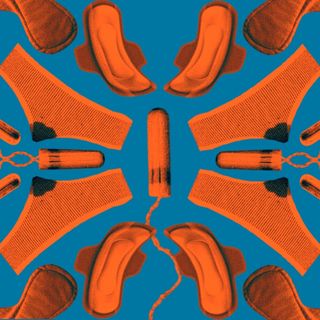
How Sexism Leads to the Frequent Misdiagnosis of Autistic Women
One of the biggest roadblocks to the diagnosis of autism in women is masking, or the suppression of one’s true self by autistic individuals.

Sexism within the medical community is among the biggest culprits behind women receiving late autism diagnoses; we know that gender bias in medical research has created a deficit of data pertaining to women’s health. Naturally, its impact extends to the diagnosis of autism too. “When it comes to autism, people are typically either diagnosed as boys or as women… This scenario — a grown woman seeking a life-enhancing diagnosis she should have received in childhood — is sadly more common than it should be,” notes an article in Forbes.
“There is a long-standing bias in the world of mental health to view some symptoms as the domain of males… In childhood, autism is now diagnosed in three boys for every one girl [and g]irls are often diagnosed later than boys, so miss out on opportunities for early support,” Tamara May and Carol Adams recently co-wrote in The Conversation. Adams is a late-diagnosed autistic woman herself and May is a psychologist. They note, “Clinical observations reveal many women who receive their autism diagnosis in adulthood have had various other diagnoses including anxiety disorders, depression and mood disorders, borderline personality disorder, obsessive compulsive disorder and eating disorders.”
One of the biggest roadblocks to the diagnosis of autism in women is masking — the suppression of one’s true self by autistic individuals, which entails putting on their best “normal” in a bid to “fit in” and avoid being pitied, patronized, or harassed for being different. It’s basically a survival strategy that, courtesy of patriarchy, happens to be more common among women. “What I’m finding interesting is how ubiquitous camouflaging is. When you start to dig into why, it’s quite alarming; for starters it’s experienced as an obligation rather than a choice. It’s very often about self-preservation, avoiding bullying or attack,” Will Mandy, a clinical psychologist and senior lecturer at University College London who authored a 2019 study on the diagnostic biases against autistic women, told The Guardian.
Women feel compelled to mask more is because, growing up, women are strongly encouraged — if not outright forced — to be pleasing and social, leading them to devise ways to present in a way that fulfils traditional societal expectations. Generally, women suffer silently in myriad ways because they are also conditioned to believe that sacrifice is one of the most important pillars of womanhood. In fact, many autistic women mask to the point of burning out.
Rakshita Shekhar, an autistic woman, had begun camouflaging during her teenage years after realizing people “abhorred her.” In 2021, the then-33-year-old, told The Swaddle that she “would stand for hours in front of the mirror practicing how to smile, how to say hi, how to ask questions. I would prepare scripts — learned from movie songs and from observing my mother — and practice them too.”
Related on The Swaddle:
Not Every Autistic Person is a ‘Savant.’ But the Stereotype Has Significant Mental Health Costs.
Explaining the gender differences in the presentation of neurodivergence — through the example of ADHD, yet another condition whose diagnostic assessment is riddled with sexist biases — Anubhuti Matta wrote in The Swaddle: “Imagine a classroom: A boy who is considered hyperactive will have trouble sitting in the same place and show restlessness by constantly moving, shifting and rocking the chair or running around. In the same classroom, a hyperactive girl may not be visibly restless. To be able to move and walk around the classroom, she may take on the role of a class monitor or the teacher’s helper and stay out of her seat and classroom as much as possible. But in doing so, she’s meeting adult expectations and obeying social norms, and displaying behavior that is not disruptive to the classroom.”
Even trained professionals miss autism in women, due to the inertia among a number of mental health professionals that keeps them from being updated about developments in neurodivergence research. As a result, many mental health professionals refuse to challenge their notions of what an autistic person looks like. To make matters worse, the sexism within the medical community — often manifesting as a tendency to dismiss women’s pain — contribute further to the invalidation of autistic women’s struggles.
It’s not surprising, then, that for years, mental health professionals dismissed Rakshita’s self-diagnosis of autism because she looked “too normal” to be autistic. “One [doctor] said I couldn’t be autistic because I had recently had a baby, which was proof of a good sex life. Another one asked my husband if he wanted to leave me. When he said while I did have my struggles, he was happy with me — I was dismissed by the psychologist. Yet another one said I spoke so well that I couldn’t be autistic,” she recalled, adding: “I used to come back crying every time. I used to blame myself for not being able to communicate properly.
Comedian Hannah Gadsby, yet another autistic woman who received a late diagnosis, had a similar experience. She was told she was “too empathetic,” “too social,” and “too female” to be autistic.
The frequent misdiagnosis of autistic women is, then, a direct consequence of deeply ingrained sexist biases within society and the medical community.
Related on The Swaddle:
The Link Between Neurodivergence and Queerness, Explained
But the lack of a diagnosis — or even misdiagnoses — have the potential to harm the careers, relationships, social lives, and, of course, the mental health of autistic women. “Girls who have autism but not a diagnosis grow up not understanding why they are sometimes confused in social situations. They might not be able to make friends as easily as others and can sometimes be targets for bullies. This can lead to lifelong feelings of failure and thinking they have character defects — or being told they do. These experiences growing up can lead to or interact with PTSD symptoms in adulthood,” write May and Adams, adding: “Where the underlying cause is likely autism, treatments and support need to be tailored to be effective.”
Self-advocacy, then, becomes a way for many autistic women — like Rakshitha and myself, among others — to obtain diagnoses. But this is not an easy route — especially since information about how autism presents among individuals who aren’t white cis males is severely lacking.
Then, of course, there is the gendered struggle of speaking up for oneself. “[M]en have a tendency to be more vocal and more persistent with their concerns. Women may have a harder time pushing back and advocating for themselves. They feel like they need to be good patients, which means accepting what their doctors tell them,” says Bella Grossman, a clinical psychologist.
The solution: greater awareness, of course. As May and Adams point out, autistic women documenting their experiences on social media is slowly debunking the notion that autism is a male condition and spreading awareness about the way autism presents in women. But that’s a slow process that’s also unlikely to reach women who lack the privilege of internet access.
Until then, it is, perhaps, impossible to ensure that every autistic women is equipped to avoid being integrated into the doomed society of the “lost generation of autistic adults.”
Devrupa Rakshit is an Associate Editor at The Swaddle. She is a lawyer by education, a poet by accident, a painter by shaukh, and autistic by birth. You can find her on Instagram @devruparakshit.
Related


The Difference Between a Panic Attack and an Anxiety Attack, Explained
